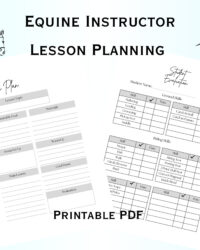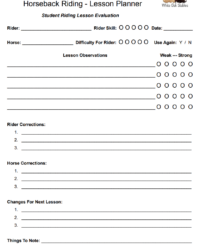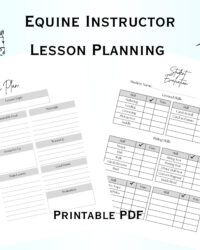Teaching reading to an entire class can sometimes feel like juggling flaming torches while riding a unicycle. There’s so much to consider: engaging every student, ensuring comprehension, managing different learning paces, and keeping the lesson flowing smoothly. It’s a complex task, but with the right tools, it becomes much more manageable and even enjoyable. That’s where a well-designed framework comes into play.
Imagine having a clear roadmap for every reading session, guiding you through the essential stages of instruction, from building background knowledge to deep comprehension checks. A robust whole group reading lesson plan template provides precisely that structure, allowing educators to approach each lesson with confidence and consistency. It ensures that no crucial step is missed and that every moment in the classroom is optimized for learning, ultimately benefiting all your students.
Crafting Engaging Whole Group Reading Experiences
The magic of whole group reading lies in its ability to build a shared experience, fostering a classroom community around literature. To truly harness this power, a reading lesson needs to be more than just reading aloud. It requires thoughtful planning that anticipates student needs and encourages active participation. A comprehensive lesson structure ensures that students are not just passive listeners but engaged thinkers, collaborators, and meaning-makers from start to finish.
Before even opening the book, setting the stage is paramount. This pre-reading phase is where you ignite curiosity and connect the text to students’ existing knowledge. It involves introducing key vocabulary that might be challenging, activating prior experiences related to the story’s themes, and clearly stating the purpose for reading. Think about what your students need to know or consider before they even begin to decode the words on the page. This groundwork builds a solid foundation for deeper comprehension.
During the reading itself, active engagement is key. This isn’t just about the teacher reading; it’s about shared reading, choral reading, partner reading, and strategic pauses for discussion. Incorporate “think-alouds” where you model your own thought process as a reader, demonstrating how to make inferences or identify the main idea. Encourage students to turn and talk to a neighbor about a specific question, or to jot down their initial thoughts. These strategies ensure that every student is actively processing the information as the story unfolds.
Once the reading is complete, the learning continues through post-reading activities. This is the crucial time for students to solidify their understanding, make connections, and articulate their interpretations. Discussions can range from literal recall questions to higher-order thinking prompts that encourage analysis and evaluation. Extension activities, such as writing responses, creating visual representations, or engaging in dramatic play related to the text, further deepen comprehension and allow students to interact with the material in different modalities.
Beyond the sequential flow, an effective whole group reading lesson also considers differentiation. While the group learns together, individual needs can still be addressed through targeted questions, varied response methods, or follow-up small group work. Regular formative assessments, whether through quick checks or brief written responses, help gauge understanding and inform future instruction, ensuring that the lesson is truly impactful for every learner in the room.
Key Elements of a Robust Reading Lesson
- Clearly stated learning objectives linked to standards.
- Materials list: books, anchor charts, graphic organizers, technology.
- Pre-reading strategies: vocabulary introduction, prior knowledge activation, purpose setting.
- During reading activities: active engagement prompts, modeling, guided practice.
- Post-reading activities: comprehension discussion, text-dependent questions, extension tasks.
- Assessment: formative checks and summative measures.
- Differentiation strategies to support diverse learners.
Strategies for Maximizing Engagement
- Think-Pair-Share: Students individually think, then discuss with a partner, then share with the group.
- Choral Reading: Students read together aloud, building fluency and confidence.
- Text Marking: Students highlight or annotate specific parts of the text while reading.
- Role-Playing: Students act out scenes or embody characters from the story.
- Visualizing: Students draw or describe what they imagine as they read.
- Reader’s Theater: Students take on roles and read script-style, bringing the story to life.
The Practical Advantages of a Structured Whole Group Reading Plan
In the bustling life of an educator, time is an invaluable commodity. Developing a comprehensive reading lesson from scratch for every single book can be incredibly time-consuming, often leading to rushed preparations or overlooked components. This is where a ready-to-use whole group reading lesson plan template truly shines. It acts as a pre-designed framework that you can adapt, ensuring all critical instructional steps are covered without having to reinvent the wheel each time. This efficiency frees up precious planning time, allowing you to focus more on student interaction and less on administrative tasks.
Beyond saving time, using a consistent template fosters a predictable and effective learning environment. When students know the general flow of a reading lesson—that there will be a warm-up, a clear purpose, opportunities for discussion, and a concluding activity—they become more comfortable and engaged. This predictability helps them to anticipate and participate more effectively. For the teacher, it ensures that every lesson, regardless of the text, maintains a high standard of instructional rigor and coherence, promoting consistent growth in reading skills across the curriculum.
Furthermore, a standardized template supports collaborative planning and professional growth. When a team of teachers uses a similar structure, it simplifies discussions about curriculum, allows for easy sharing of effective strategies, and facilitates common assessments. New teachers, in particular, benefit immensely from having a guiding document that outlines best practices for reading instruction, providing a roadmap for developing their own teaching expertise and confidence in leading whole group activities.
- Time-Saving: Reduces planning time significantly.
- Consistency in Instruction: Ensures all key elements are covered in every lesson.
- Increased Focus: Allows teachers to concentrate on student needs rather than structure.
- Enhanced Collaboration: Facilitates sharing and co-planning among educators.
- Improved Student Engagement: Predictable routines help students feel secure and participate more.
- Better Assessment Opportunities: Prompts the inclusion of checks for understanding throughout the lesson.
Mastering whole group reading instruction is a journey of continuous refinement, and having the right tools makes that journey smoother and more rewarding. By adopting a systematic approach to planning, educators can transform potentially overwhelming tasks into streamlined processes that consistently yield strong learning outcomes. It’s about empowering ourselves to deliver impactful lessons that truly resonate with every learner.
Ultimately, a well-structured framework elevates the quality of reading instruction, creating vibrant and effective learning spaces where every student feels supported and challenged to grow as a reader. It’s an investment in both teacher efficacy and student success, paving the way for a classroom filled with confident and competent readers.


